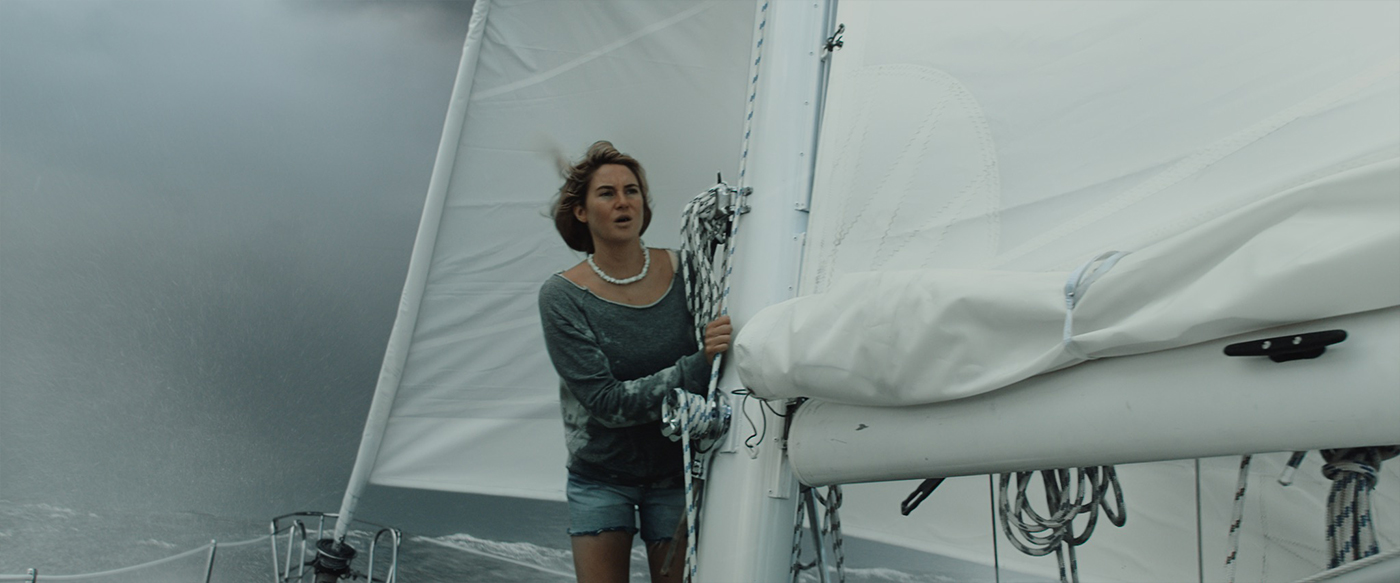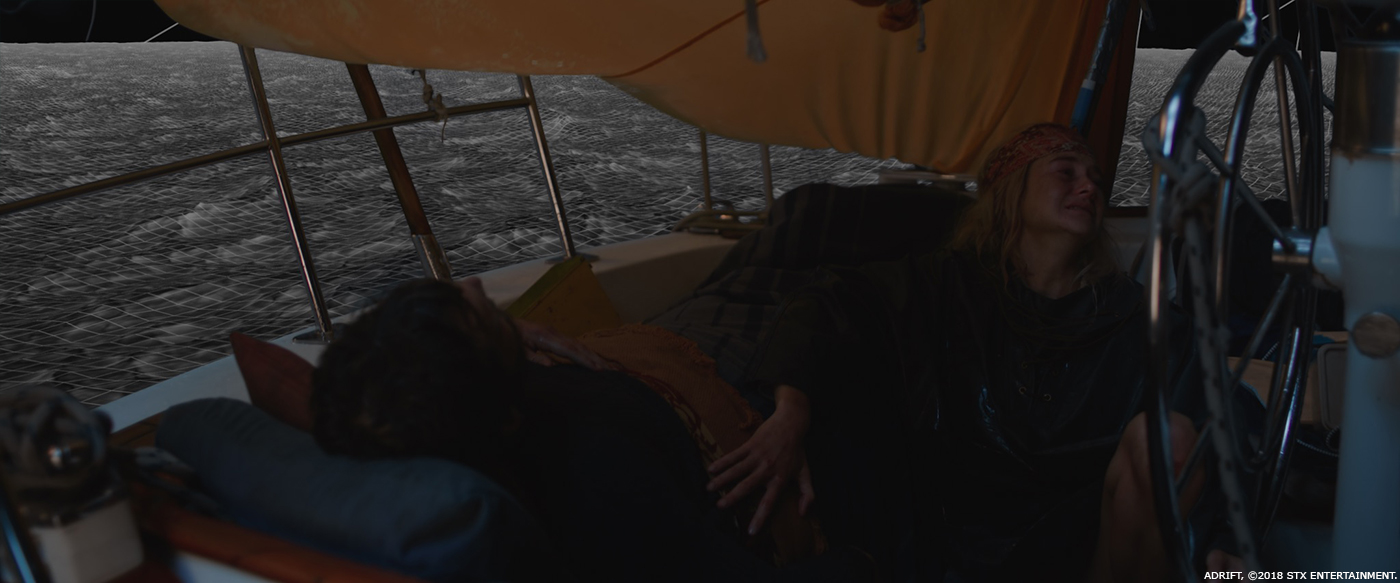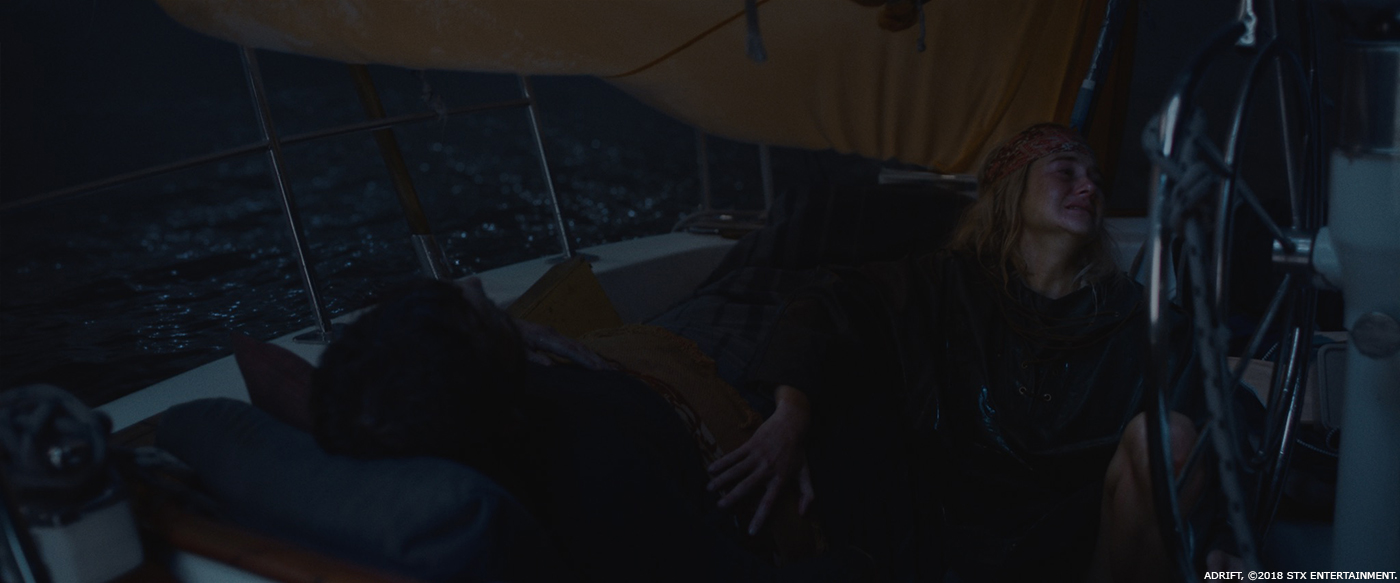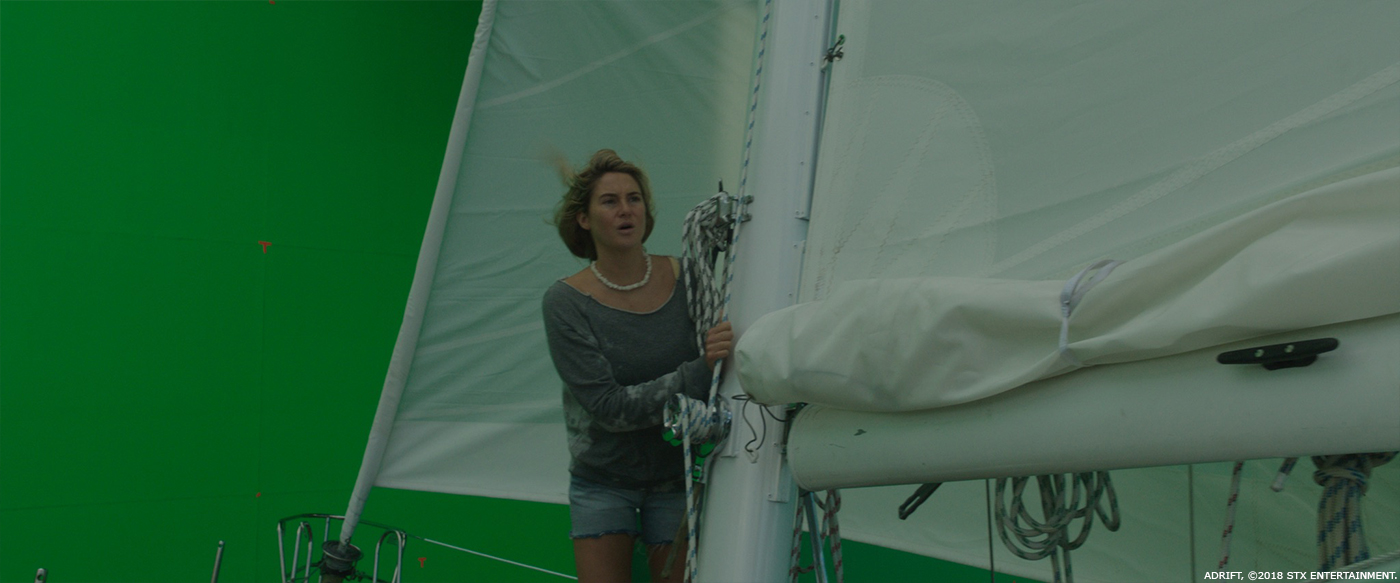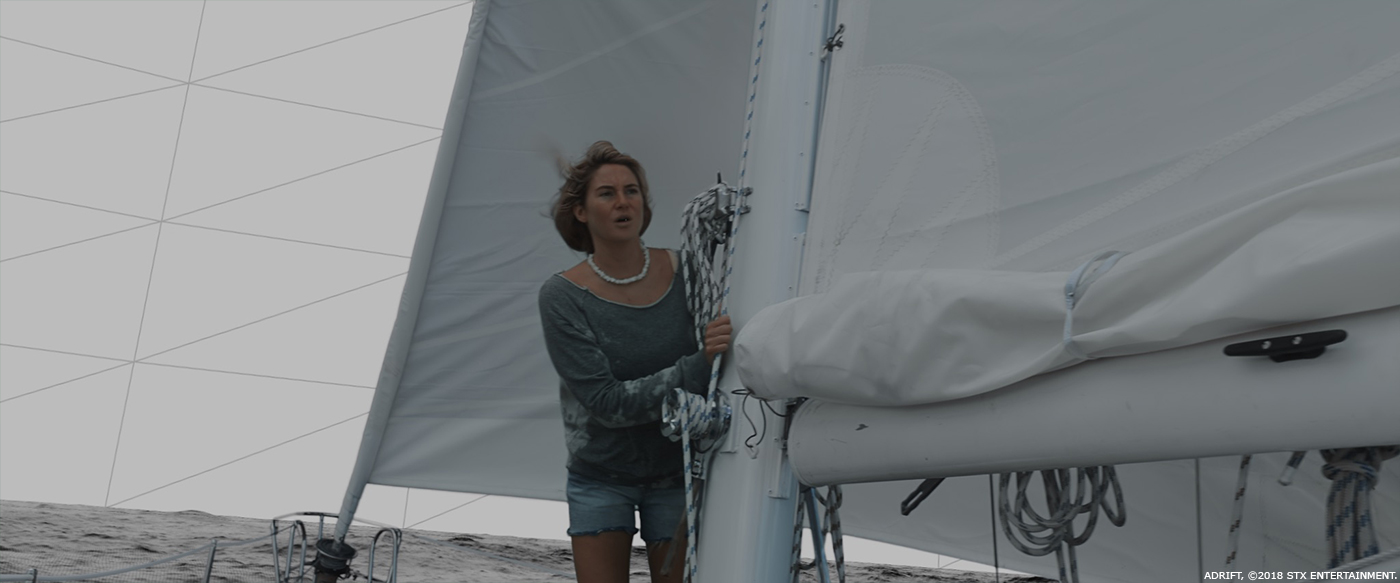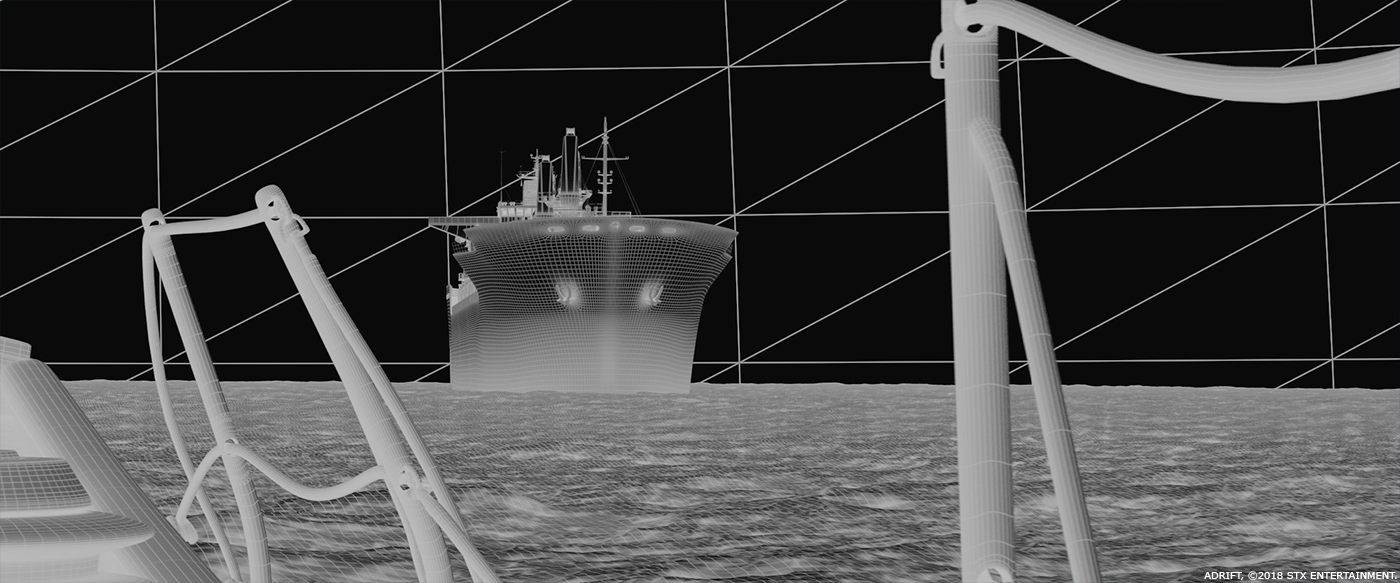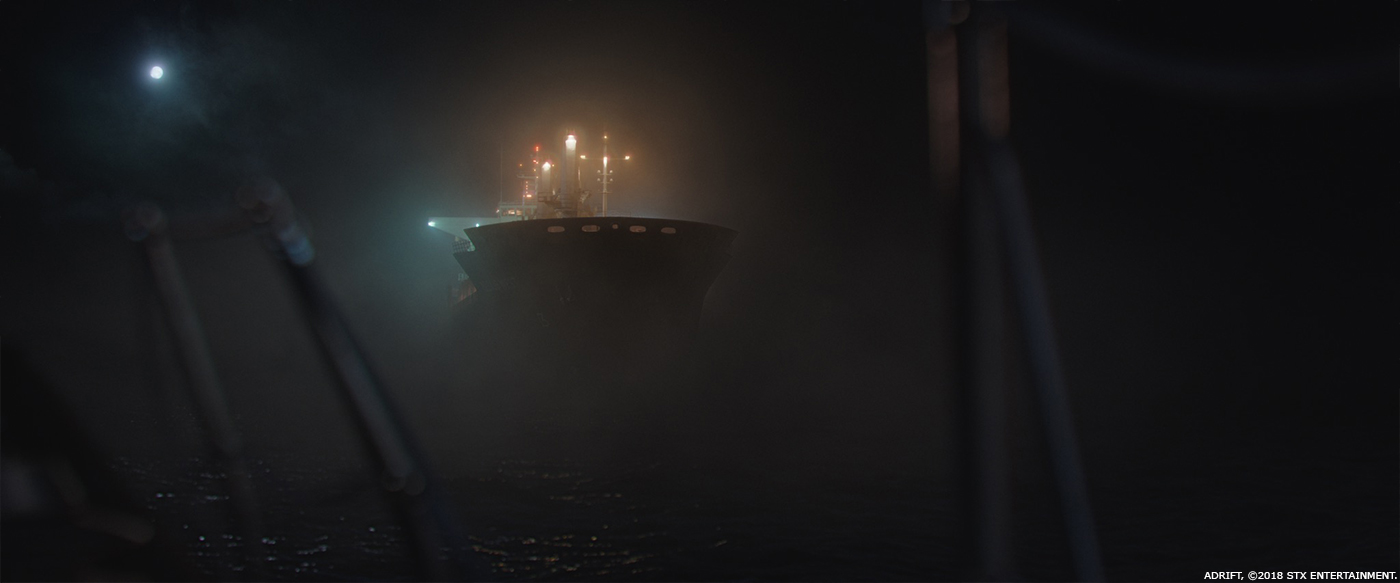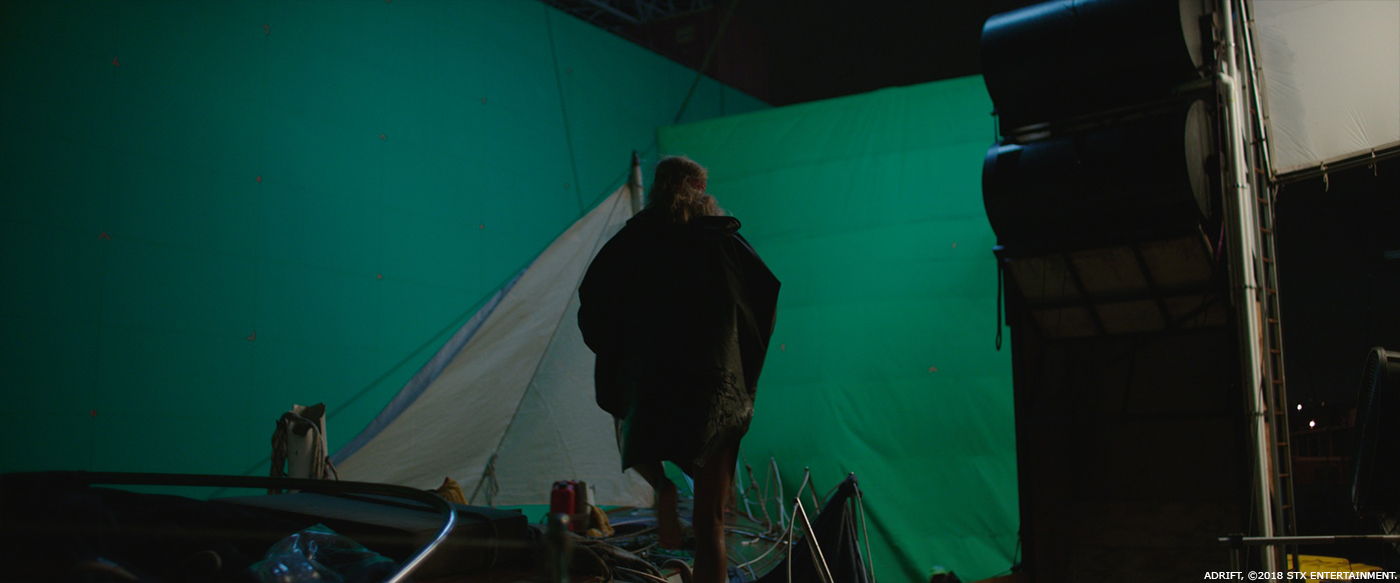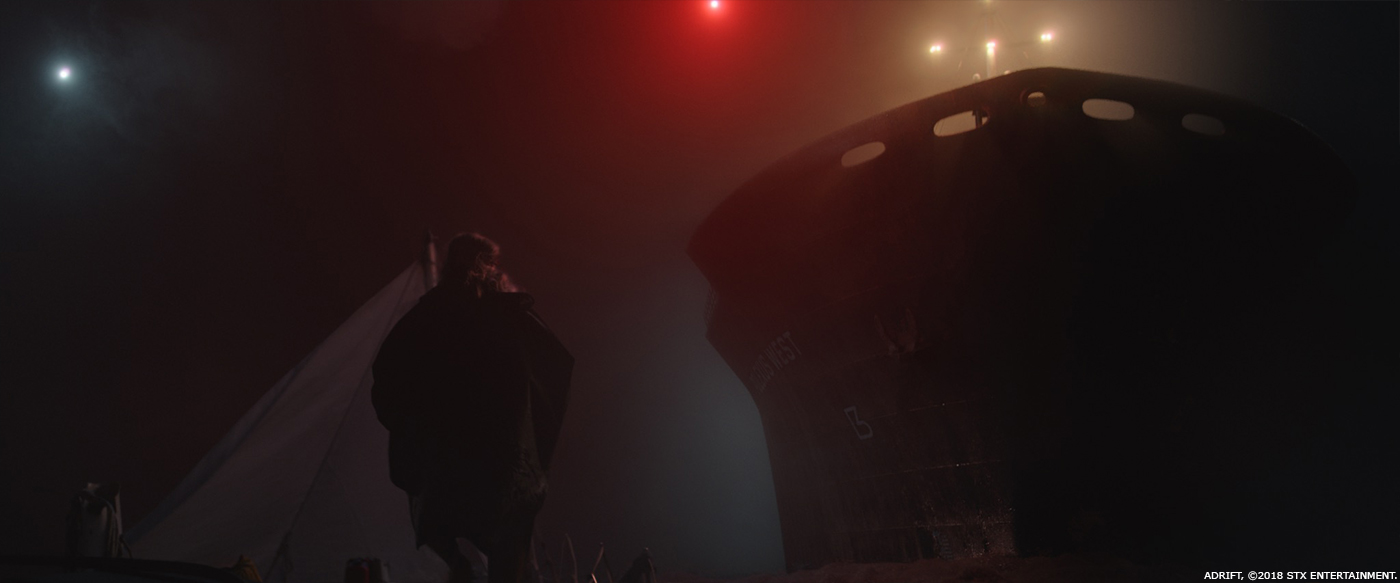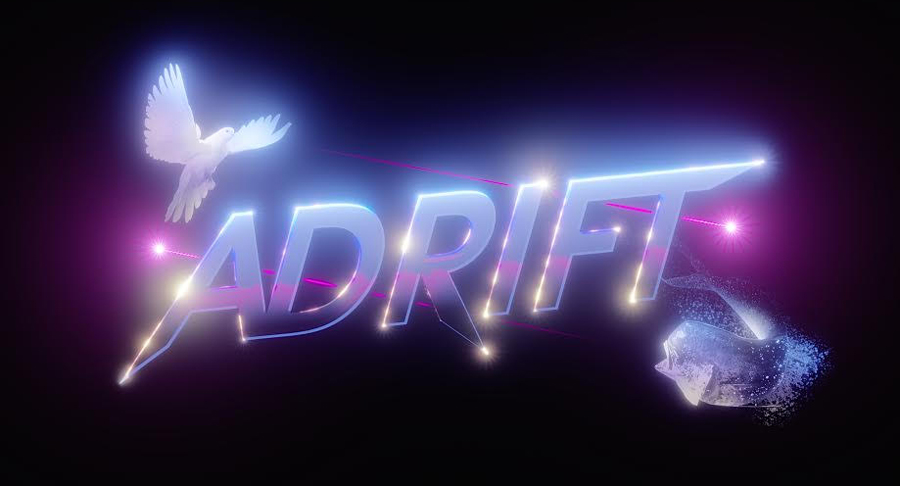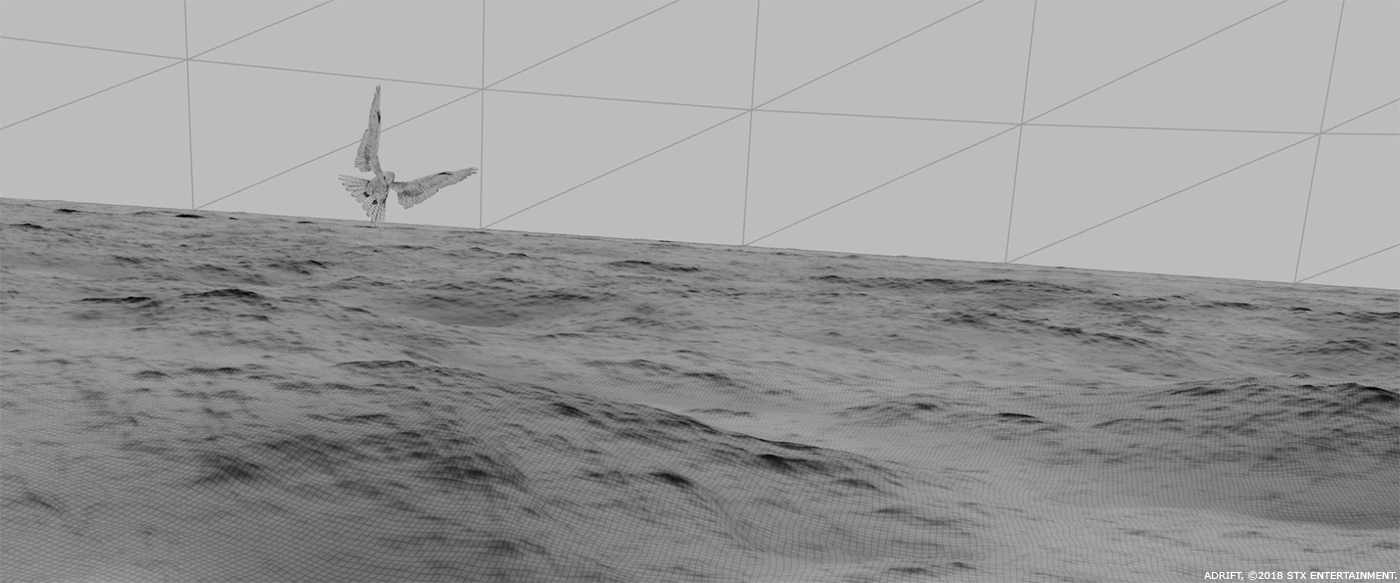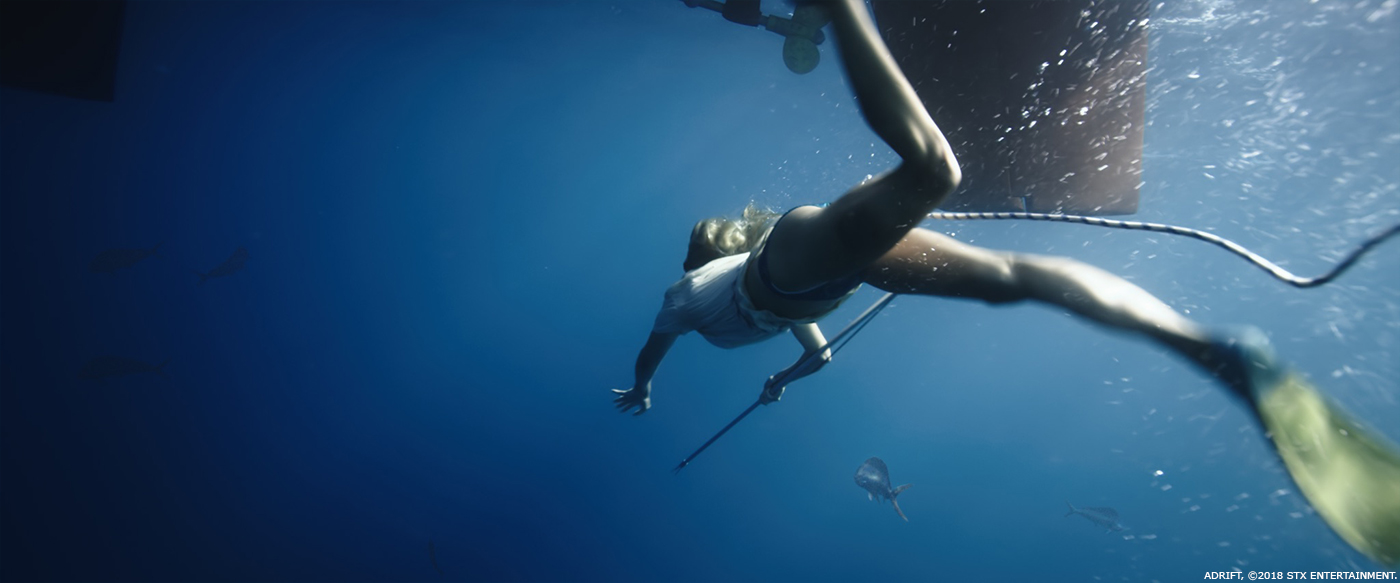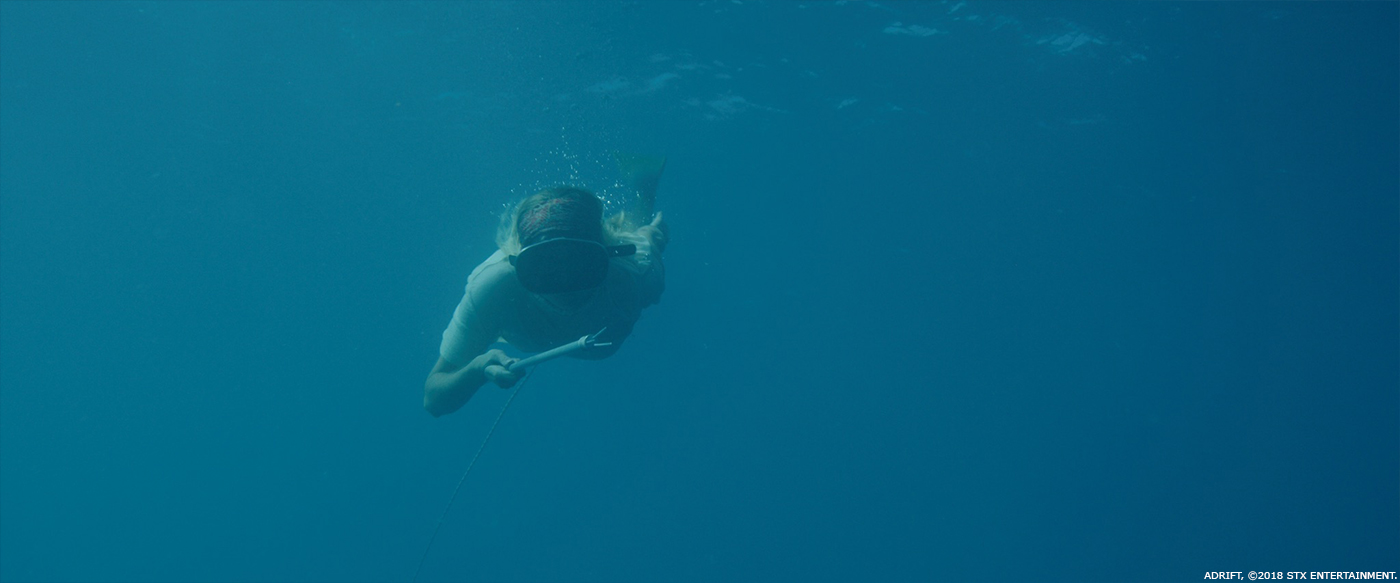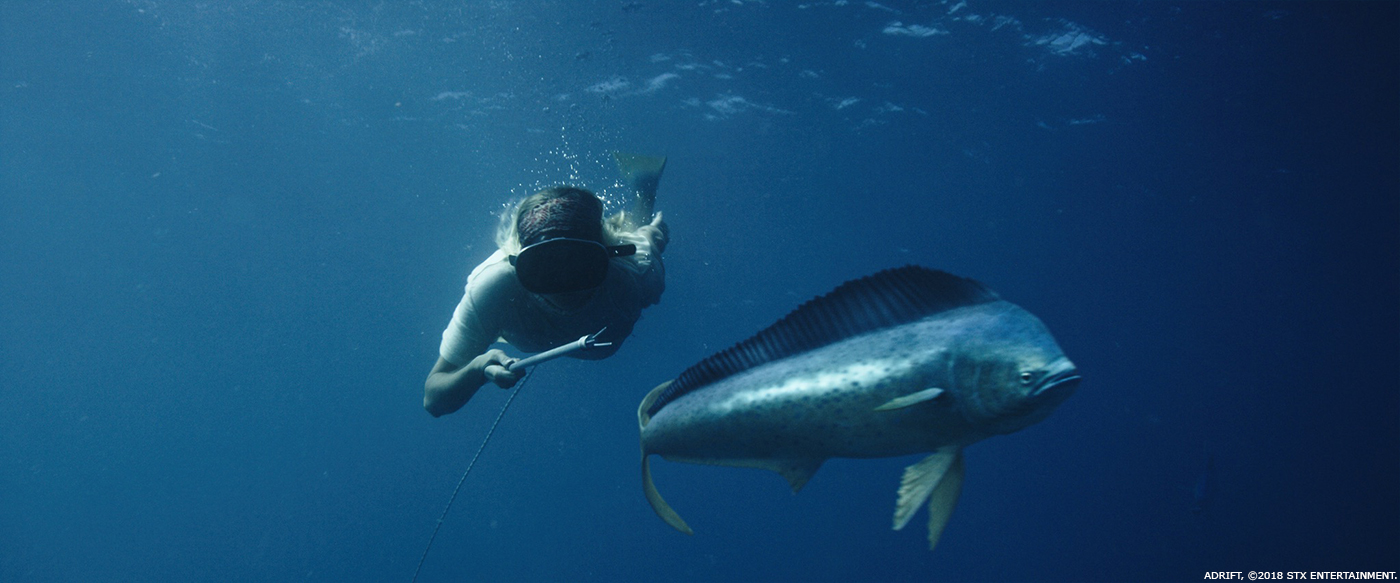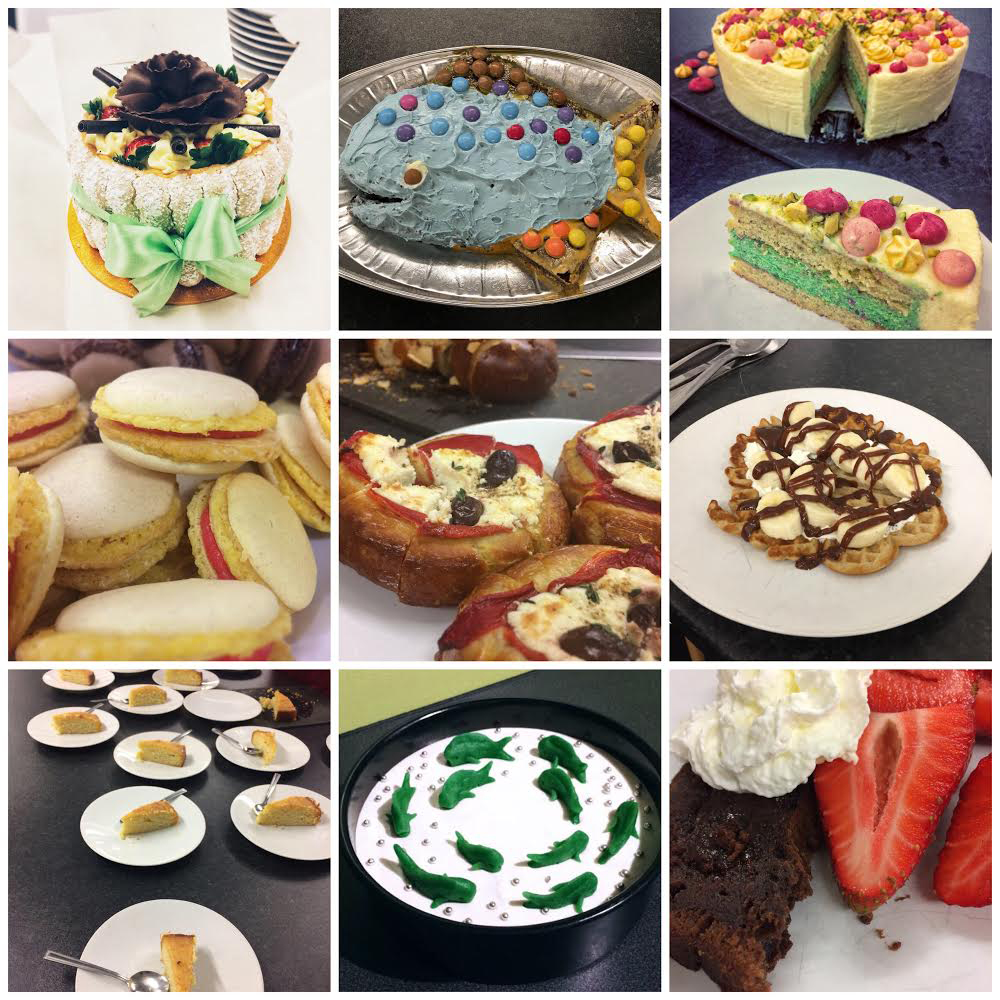Earlier this year, Salvador Zalvidea explained the work of Cinesite on MUTE. He talks to us today about his work on ADRIFT.
How did you get involved on this show?
We’ve worked with Gavin on previous shows including EDGE OF TOMORROW and the production was looking for UK studios to handle the VFX of the film. Gavin knew the project would get the TLC it required at Cinesite and we were keen to work with this director too so it was a perfect fit.
How was this collaboration with director Baltasar Kormákur and VFX Supervisor Dadi Einarsson?
Baltasar came in to Cinesite twice to give us a more precise creative brief but otherwise Dadi was our main creative partner. As often as possible we worked with references either Dadi provided to us or which we sent him for approval. Ultimately, the goal was for the visual effects to be invisible.
How did you split the work amongst the Cinesite offices?
The work was entirely completed at the London studio.
What are the sequences made by Cinesite?
In broad terms, Cinesite’s work encompassed the creation of CG oceans, CG birds and fish, sky enhancement and stitching multiple plates together.
Can you explain in detail about the creation of the ocean?
Creating realistic expanses of open ocean was a key challenge. Most shots involved the matching of surrounding plates, whilst also art directing the look of the waves to make it more menacing than the plates. There was a fine balance between matching the live action plates and supporting the narrative and mood of the sequences.
In one particular shot the camera pulls back across a windswept open ocean, we follow a lone dove as it flies past us revealing the Hazana, a 40ft luxury yacht, with Tami (Shailene Woodley), the hero of the story standing on deck as the Hazana cuts through the wind battered ocean. Throughout the shot the ocean is a fully CG simulation, featuring a highly detailed water surface, with breaking waves, spray and surface/subsurface foam.
The yacht was filmed against greenscreen, dry for wet, with no on-set spray or interactive elements for this shot. The boat was mounted on a gimbal which generated basic overall movements for the yacht. However, due to limitations to the physical speed and reach of the onset camera crane, a new cg camera move had to be built to allow for the high speed and fluidity the director required during the transition to the green screen element. This also allowed for the addition of extra animation to the camera move, up and down, which really gives the impression of the Hazana cutting through the waves. Further cg simulated effects were added to increase the realism, such as splashes and spray to the impact of the Hazana bow, and minute particles of water in the air as the camera tracks across the water.
We used Houdini for the water simulations and rendered with Arnold in Maya.
How did you manage the water simulations and interactions?
The live action plates included practical water in some instances, spraying over the characters and boat. Whilst this was useful in that it captured a realistic interaction, it also presented several challenges by constraining our water simulations; we often needed to “cheat” our simulations to work within the restraints of the practical water. Its motion and direction didn’t always match what was required.
Michael Parker our head of FX and Janis Cudars did a great job getting the look Dadi was after. One particularly challenging shot was the top down shot where the wake of the cargo hits the Hazana. It was a very heavy but beautifully detailed simulation that needed quite a few iterations.
How did you create the various background environments?
We didn’t create many environments, most of our environmental work involved sky DMPs or enhancements done by Emile Hardy and Roger Gibbon.
How did you handle the challenge of the matchmove?
Once we had matchmoved the camera and the boat, we still had to decide which part of the motion came from the boat rocking on the water, the ocean or the camera as otherwise the boat often looked like it was flying above the water. Another challenge was matchmoving underwater shots with absolutely no static point in frame. Matt Boyer and his team needed a few iterations before getting it right but in the end, they managed to get a very convincing motion.
We also added 2D animation to all our shots that help convey the proper motion.
How did you create the huge cargo ship that appears during the night?
The model itself was based on several references we received with some tweaks to help telling the story and getting a more interesting look. The model and textures were done by Tim Potter and his team. Actually, the navigation lights setup we ended up with is meant to signal when a cargo is aground but it looked more interesting like this. I am sure a small part of the audience might feel this is wrong but the whole sequence could just have been a hallucination, so we opted for creative license there.
Can you tell us more about the lighting challenges of this sequence?
The scene with the cargo ship is lit by only three main sources of light; the moon, the navigation lights of the ship, and the distress flares. The depth at which the camera can see into the fog and how that affects the ocean surface simulation, the spray foam and fog volume, became a real challenge. Again, additional camera animation was added on a per shot basis in order to really sell the feeling of being at sea, and yet it had to be done with a subtle hand, so that it felt natural and believable and not over-done. Ultimately, we tweaked the look of the cargo ship heavily in compositing because we wanted some detail on the ship to be visible which we couldn’t achieve with realistic lighting in CG. We wanted to bring in details in specific areas, otherwise the whole scene would have been too dark. Richard Moss was in charge of the lighting of this sequence and worked closely with Dan Harrod, our comp supervisor, Anne-Sofie Tholander (compositor) and Ruxandra Cristoiu (compositor) to achieve the desired look.
A bird comes on the boat. Can you tell us more about his creation, rigging and animation?
The bird, which appears in a few shots, is a fully CG Barbary dove, built with a specific wet-feather look to match the trained bird used on-set in close-ups. We named the bird Barbara, isn’t she cute? She became part of our vfx crew t-shirt 80’s design along with the mahi-mahi.
The first shot with the bird was a challenge as we had to convey the feeling that the bird was exhausted, flying through high wind, while getting a convincing camera move. It is probably the shot that took us the longest to get right. This animation was done by Simon Wottge, our animation lead.
Regarding the rig, the particular areas that needed attention were how the legs disappear inside the body as the bird is flying and how the wings fold or unfold. We used a combination of feathers done in Yeti for the body and textured feathers for the bigger wing feathers. Niovi Phinopoulou spent a long time working on the wet look of the feathers and ended up with a final result almost identical to the reference. Maurizio Giglioli, our CG supervisor on this show has a lot of experience dealing with CG creatures. This helped a lot.
Later, Tami is catching fish. Can you tell us more about their creation and animation?
Most of this underwater sequence required us to add fish to the ocean, either to populate the plates that looked too empty or because Tami is trying to catch a mahi-mahi. Again, getting photoreal fish which looked and moved convincingly was a challenge. We used lots of reference pictures and videos, both provided by the client or sourced ourselves. Leonardo Bianchi (lighter) and Adriano Mule (compositing) had fun replicating the way fish scales react to light and the beautiful iridescent pattern mahis have. Luca Cantani and Gianni Malpeli animated the fish, finding the right balance between choreographed and believable motion.
That said the biggest challenge for the team was to understand that the plural of fish is fish, unless you are talking about different species of fish at the same time, in which case you can say fishes! We also had lengthy discussions about the difference between a shoal of fish and fish schooling. A group of fish is shoaling, when they swim in the same direction they are schooling.
As a revenge, we went to a restaurant to eat mahi mahi burgers. They taste very good.
Are there any other invisible effects you want to reveal to us?
One particular shot which we called the “gorge jump”, showed Tami and Richard jumping from a gorge into the water, from a continuous and close-up perspective. It required us to stitch three different plates together which had been shot with two different cameras and lenses. Hiding the subtle lens shifts and matching the look of one camera required lots of localised warps and grades. It is an apparently simple but beautiful long shot that takes us from the top of a cliff to swimming underwater. This shot was composited by Roy Peker.
We also completed several sky replacements. For these, the biggest challenge was getting a consistent look from shot to shot while the exposure and time at which each shot had been filmed was different. Replacing or enhancing skies is always trickier than expected as one easily loses the subtle link between the look of the sky and how it illuminates the scene.
Which sequence or shot was the most complicated to create and why?
The cargo sequence because we were dealing with a kind of surreal sequence that had to still look completely believable with a very limited amount of lights. I particularly like how the flare reflects on the cargo hull.
The first long bird shot because getting all the elements working together was tricky: bird animation and flight path, camera move, waves speed and amplitude, white water and spray, splashes against the Hazana and the stitch with the plate. On top of that, because we had to enhance the way the Hazana enters frame to make it more powerful, we didn’t have a proper 3D scene that allowed us to put all the elements together, so each time we made a change to timings or positions, we then had to update our comp to make it all work. Dan Harrod dealt brilliantly with this very complex shot and Sohrab Esfehani (lighter) managed to get a very convincing look and lighting for the ocean surface.
Is there something specific that gives you some really short nights?
My now sixteen-month old daughter gave me most disturbed nights during the completion of ADRIFT!
What is your favorite shot or sequence?
Although it was not the most technically challenging of our work, I like the gorge shot. Its continuous camera movement from cliff to underwater captures the adrenaline of the narrative and is a really successful shot. I like imagining the cameraman jumping alongside the characters, with his camera into the water!
What is your best memory on this show?
Cake. We ate a lot of cake on this show. We ended up having to create a cake schedule to keep track of who was bringing cake when. Special mention to Fie and Rux’s Wafternoon, Peter Olliff’s (production coordinator) mahi cake, Martin Ofori’s (compositor) legendary tiramisu. One of Martin’s shots actually included a “make tiramisu” task that had to be done for his shot to be approved!
Our team put on weight while working on this movie about a couple starving on a boat. I regret nothing.
We also had our own actual magician in the team, Jorrit Schulte (compositor/magician), who swallows razor blades for pudding.
More importantly, the great atmosphere within the team has been a great experience and I can’t wait to workagain with all of them.
How long have you worked on this show?
Essentially for nine months. We started work in early July 2017 and delivered the final shots at the beginning of May 2018. The first five months were mostly spent building assets and the first plates were turned over mid-December 2017.
What’s the VFX shot count?
We completed 64 shots.
What was the size of your team?
It varied throughout the course of the production, but in total about 50 people worked on it either directly or in support.
What is your next project?
I’m sworn to secrecy, as usual! But I hope to be able to say more soon.
A big thanks for your time.
// ADRIFT – VFX BREAKDOWN – CINESITE
// WANT TO KNOW MORE?
Cinesite: Dedicated page about ADRIFT on Cinesite website.
© Vincent Frei – The Art of VFX – 2018


